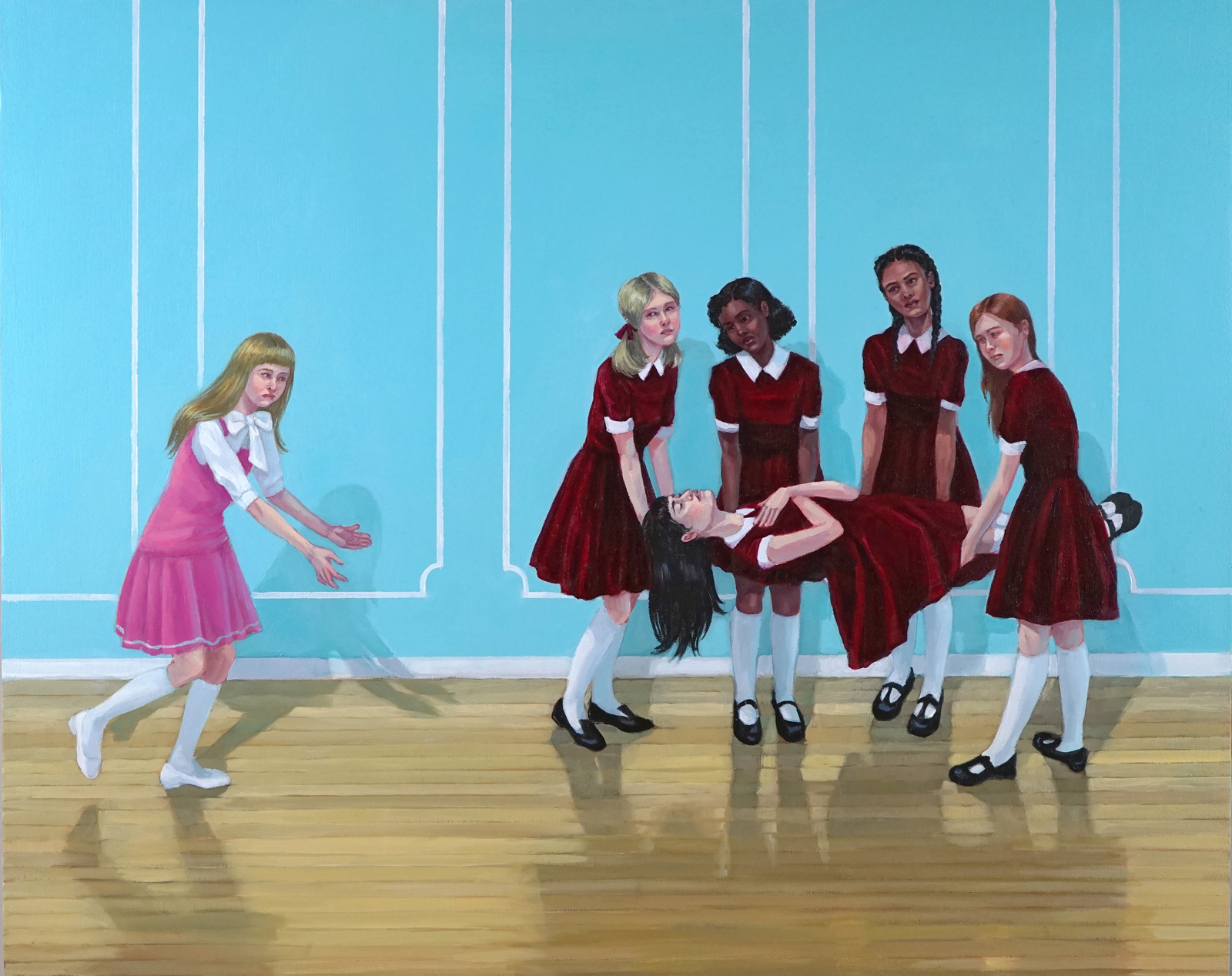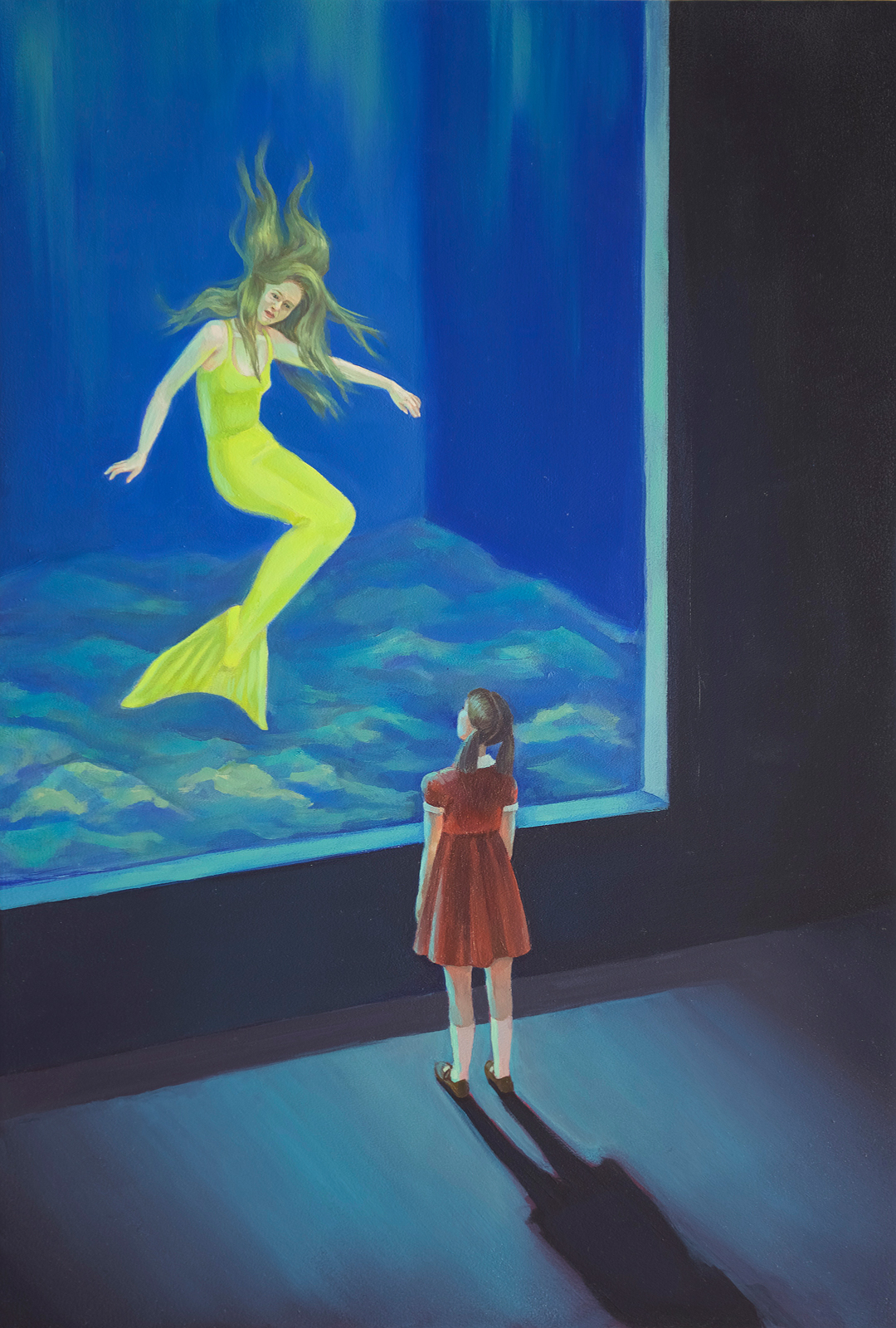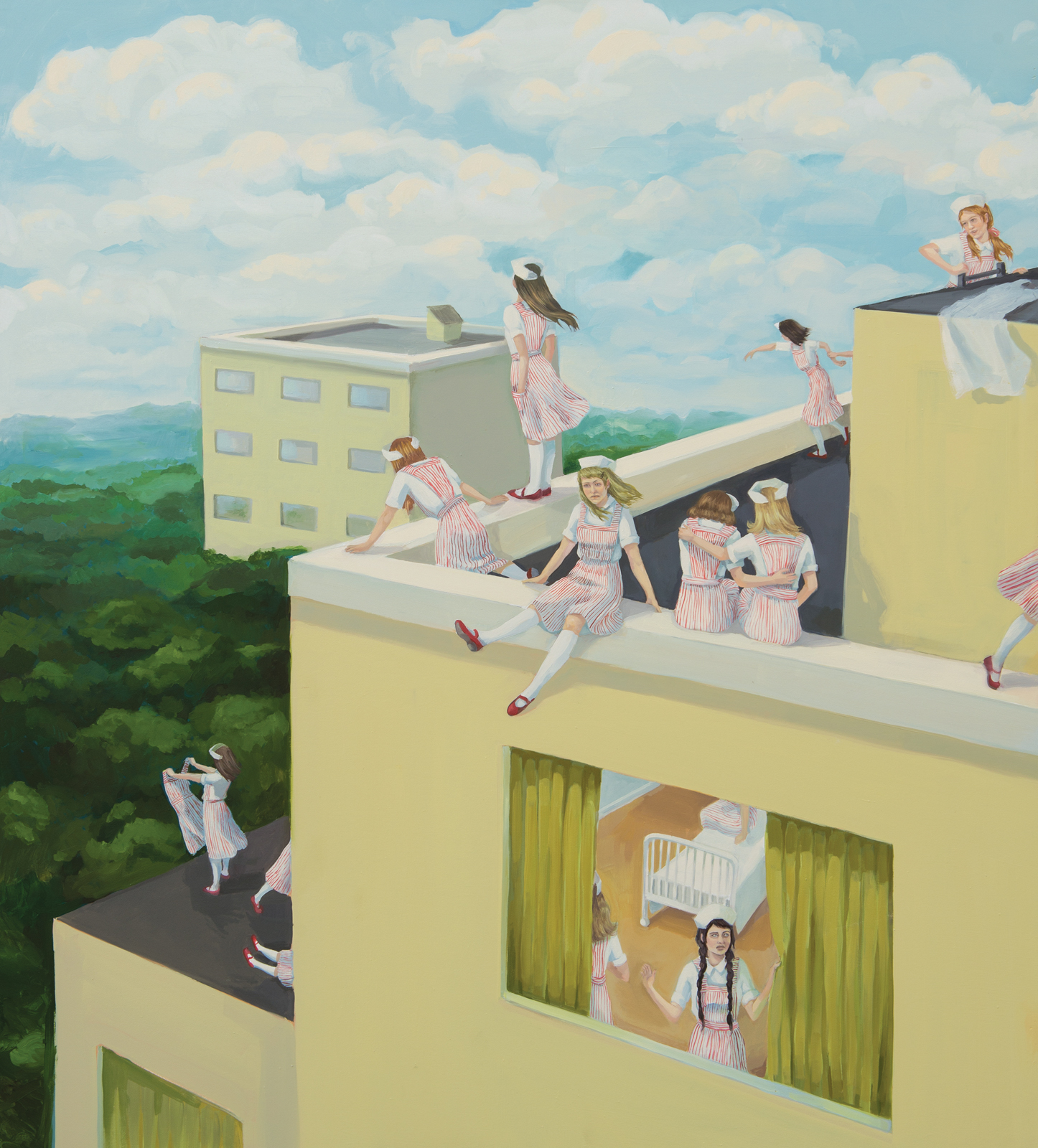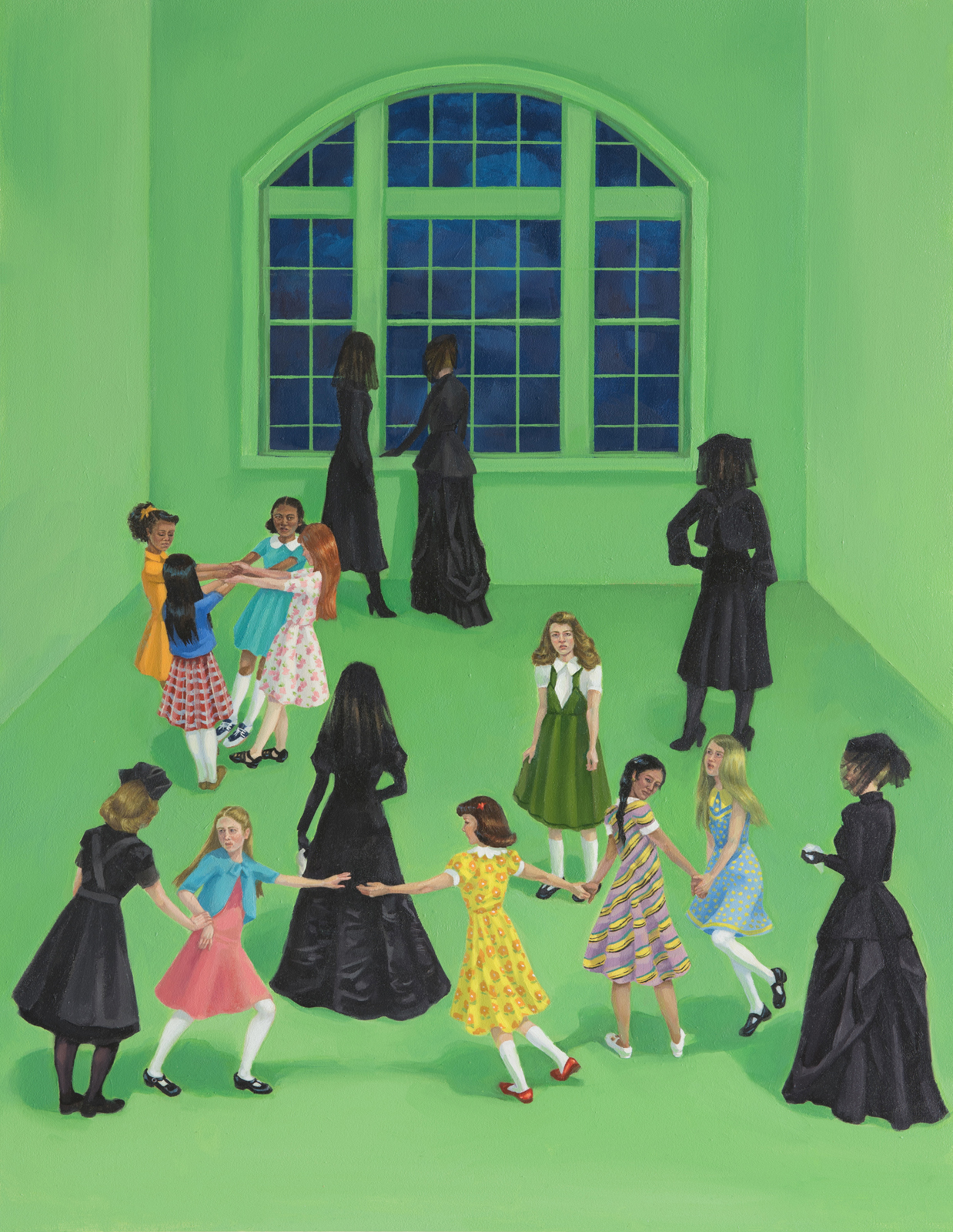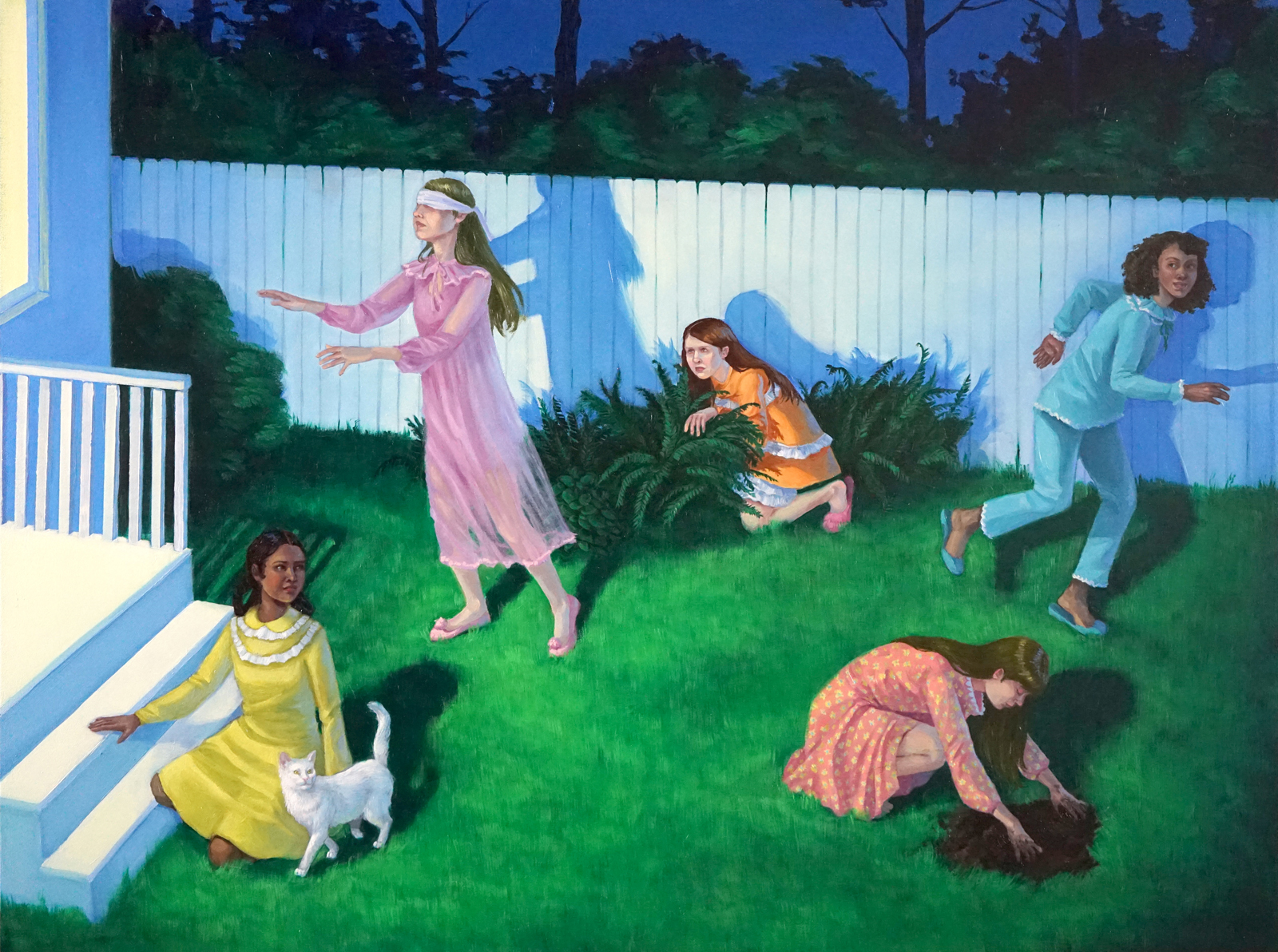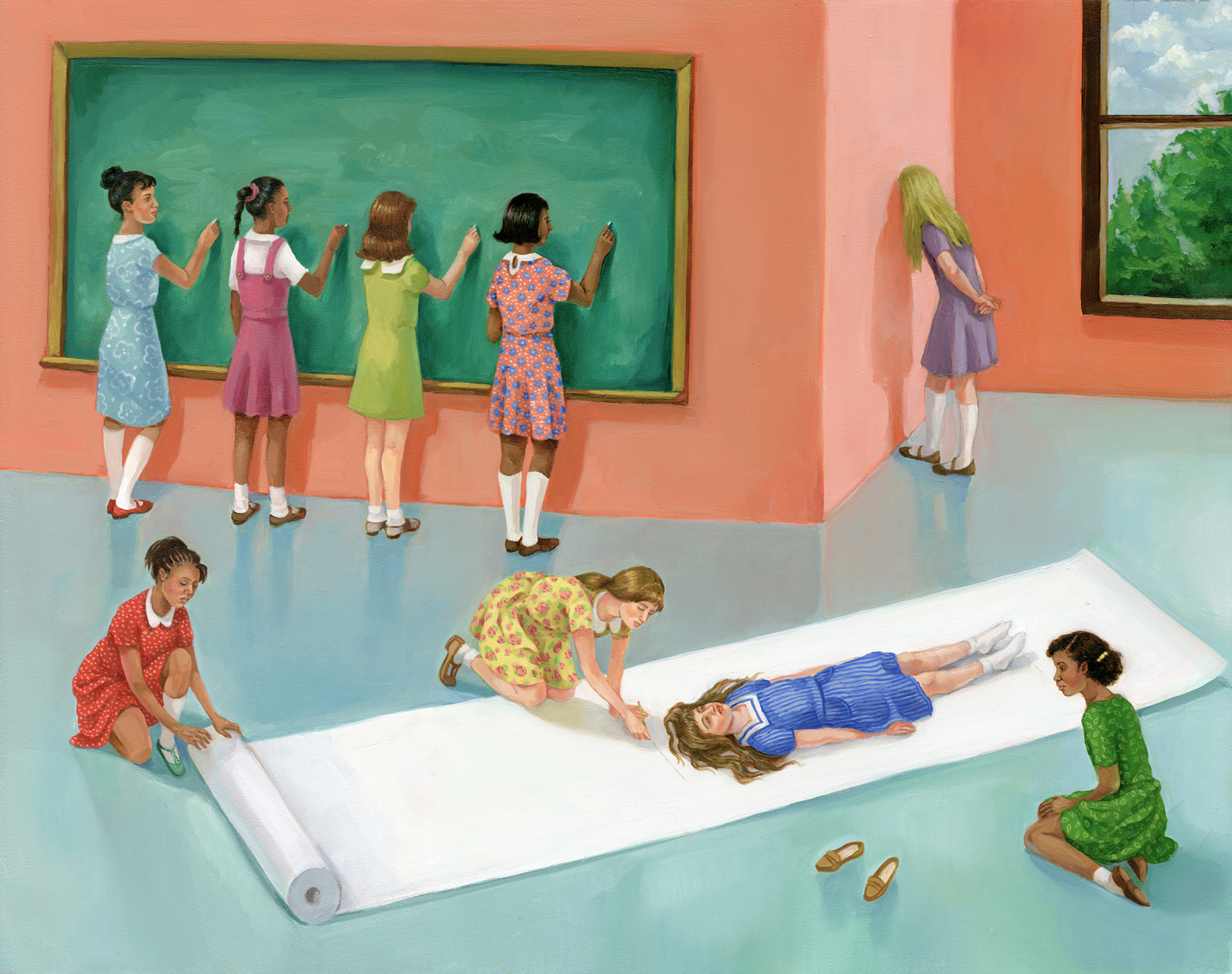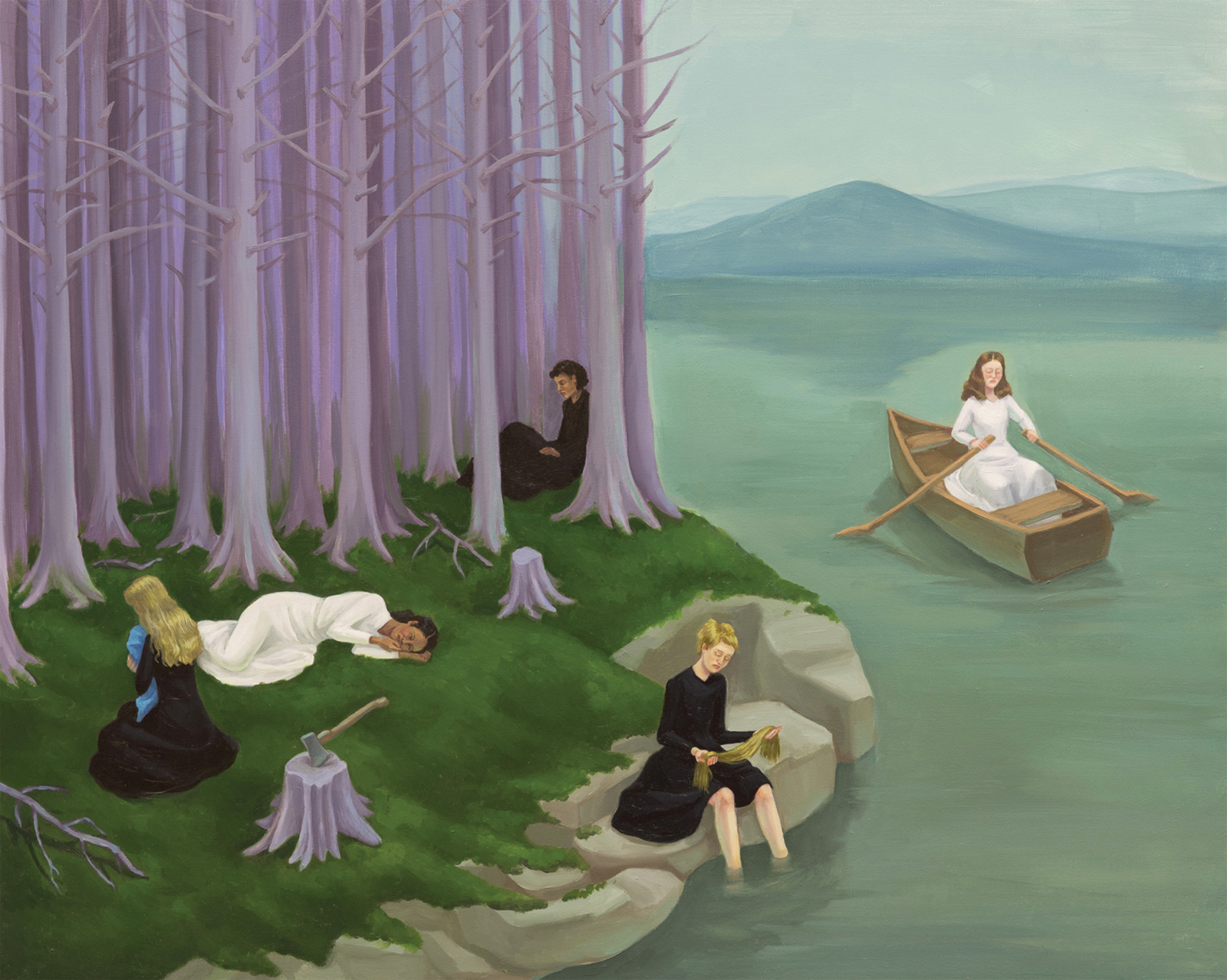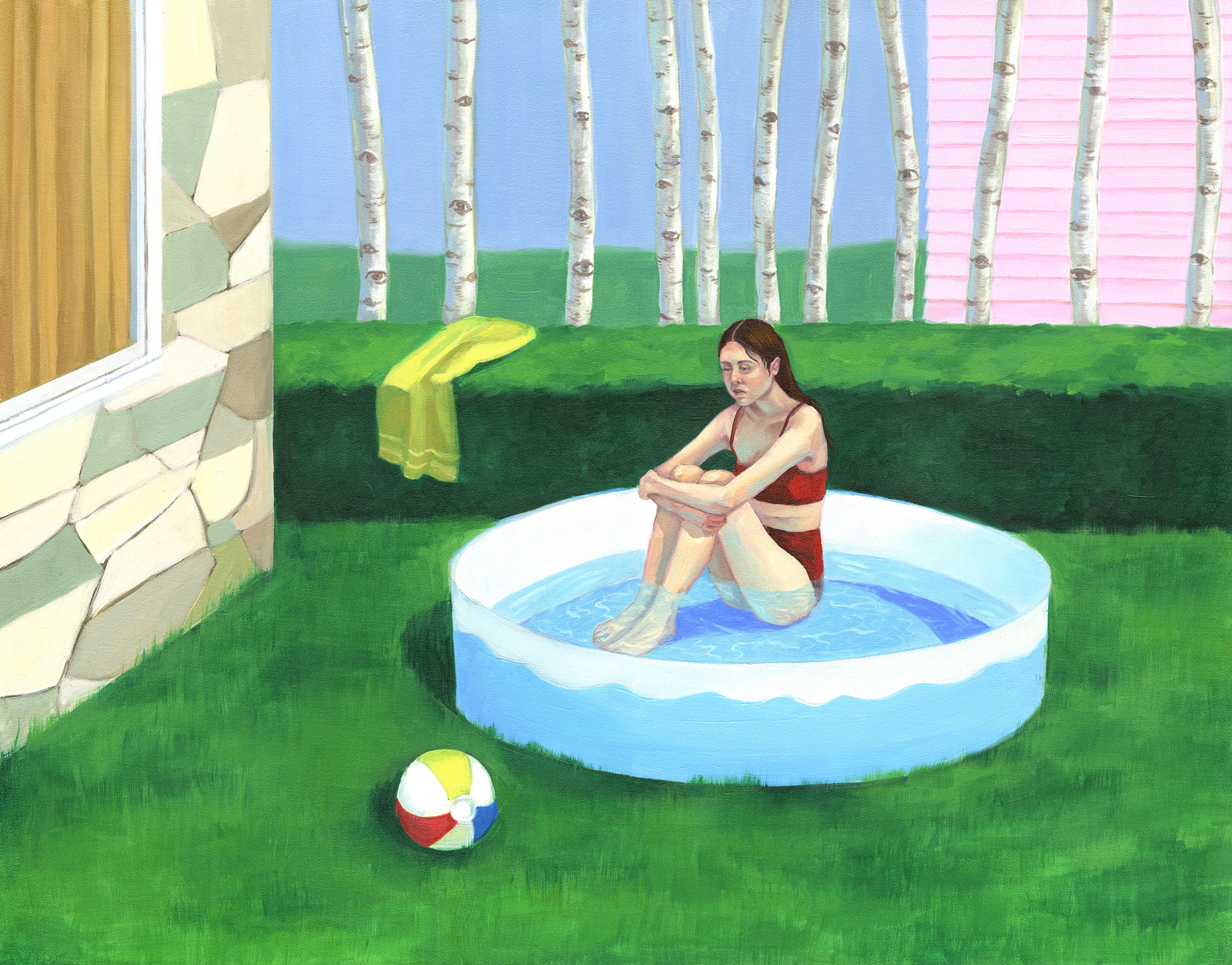ZOE HAWK - GIRLS, GIRLS, GIRLS
GIRLS, GIRLS, GIRLS
AMERICAN ARTIST ZOE HAWK PAINTS THE FASCINATING WORLD OF ADOLESCENT GIRLS ON THE EDGE OF WOMANHOOD, AND WHAT SEEMS SWEET AND INNOCENT AT FIRST SIGHT OFTEN HAS A DARKER EDGE TO IT.
Zoe, could you tell us a bit more about where you are from and what is that like?
I grew up in St.Louis, Missouri. People often assume I went to a private girls’ school in the suburbs because of the imagery in my paintings, but I actually went to a city public school. I think the atmosphere of the old St. Louis public school buildings makes its way into my paintings quiteoften, with the wooden floors, tall windows,and brick exteriors. For the last several years, I was located overseas in Doha, Qatar. I lived in a neighborhood that was kind of like a Disneyland version of Venice, with pastel buildings and sea green canals. Last year, I moved back to Columbia, Missouri, where I now have my painting studio.
When did you first start drawing/ painting?
I loved to draw when I was a kid, mostly girls and bunnies wearing legwarmers (it was the 80s). I also liked writing and illustrating my own little books. I think that same love of storytelling makes its way into my paintings today. I did not start oil painting until college. Originally, I was a Drawing major, but as soon as I took a painting class I was hooked.
Why the fascination with young girls/ women?
My paintings are meant to be allegorical and come from a place of broad cultural and social examination, however much of it is based on my own personal experiences. My adolescencewas significantly shaped by my identity as a cis- gender girl, and gender continues to affect my lifeon a daily basis.
I am often asked why I don’t paint boys, and the simple truth is that I don’t know what it’s like to be a boy. I also think that in a culture that has for so long been dominated by male voices, it is important that girls’ stories are told. I remember when I was a child being hungry for relatable representations of girls in the media, and remember projecting myself into the images I saw. One of my favorite things is to overhear women and girls as they point at my paintings, saying things like “This girl is me”, or “That one’sdefinitely you”, or “This reminds me of the time...”.
Your work seems at once familiar and kind of sweet, yet always with an element suggesting something is not quite right, out of place, eerie even. Did you have an unhappy childhood?
Yes, there are several reasons why my work is like this. Firstly, I think there is a general, pervasive cultural idea that girls are sweet and docile by nature. However, girls are capable of dark thoughts and actions. They have social and inner lives that are rich and complex, that are fraught with anxiety, fear, envy, self-consciousness, and evenviolence.
Secondly, my work is very much about howwe socialize and find belonging, and how wediscover our identity. This process is never easy, and can be rugged territory to navigate. I am a self-described nerd and introvert, and was quite the goody two-shoes when I was in school, so I was often bullied by my peers and struggled tofit in socially.
The third reason is that in adolescence I came toa lot of painful realizations about what it meansto be a woman. I remember being curious and excited about womanhood as a child, but it alsoterrified me in its obscurity and inevitability. WhenI reached puberty, many of the romantic notions I had about womanhood were crushed by reality.
Boys and adult men alike started to notice me andgive me unwanted attention, and I began to feel self-conscious about my body for the first time. I learned about sexual violence. I realized the limitations andexpectations the world had set for me because Iwas a girl, and recognized the ways I had been socialized to fit a specific mold of femininity. I felt likeI lost part of myself, and I mourned the innocence and freedom of my childhood. In many ways mypaintings celebrate girlhood and reflect feelingsof joy, nostalgia, and curiosity, but they are at the same time tied to this anxiety and sadness.
“My adolescence was significantly shaped by my identity as a cis-gender girl, and gender continues to affect my life on a daily basis.”
How does a Zoe Hawk work come to life? From a memory or something you observed to a first sketch and many many layers of paint?
I’ve compiled a library of source material over the years that I pull imagery from (poses, settings, clothing, hairstyles, etc.). I scour antique stores and flea markets for old photographs, school textbooks, vintage postcards, mid-century clothing catalogs, and other printed matter. Ialso research images online that I organize into categories. Sometimes I start with an idea for a painting and then search my collection for imagery that will fit, while other times the image itself sparks an idea that is developed into a narrative.
Occasionally I build a sort of miniature stage set out of painted paper and cardboard as a visual reference, which I think increases the sense of theatricality and fiction in the paintings. In a gouache sketch, I piece together these found images with other elements (either imagined
or from memory) and place the figures within settings, like dolls in a dollhouse. When I get to the actual painting, there is a lot of layering, moving figures around, changing colors, etc.
How has your work evolved from graduation till today? Do you feel it has become more surreal perhaps?
When I first entered graduate school, I was painting the same straightforward portraits that I had been making for years. It took a while to work up the courage to try painting multiple figures without using a traditional sitting model as a reference, and to start inventing spaces, characters, and narratives.
At first I was focused on the idea of uniformsas a metaphor for gendered socializationand conformity, so I was painting schoolgirls, nurses, majorettes, and girl scouts.
Those ideas are still present in my work, but I have broadened my investigation of girlhood,socialization, and identity, and I do think that my imagery has become a little more surreal. I’ve also moved away from multiple figures in some paintings to depict only one or two solitary characters, in order to focus on feelings of isolation and introspection.
Alice in Wonderland comes to mind. Is that an inspiration? Or do you feel as such?
Absolutely. My girls are moving their waythrough a bizarre world that perplexes themand sparks their curiosity, much like Alice. They challenge authority, question their surroundings, and do it all while wearing skirts and Mary Jane shoes, also like Alice.
I’ve taken titles for a few paintings from LewisCarroll’s poem A Boat Beneath A Sunny Sky,which is about childhood and growing up, and I have a cutout of Sir John Tenniel’s illustration of Alice taped to my studio wall.
Who or what else do you consider inspirations?
When I was a child, I was introduced to EdwardGorey by my older sister, who had several of his books. His dark and mysterious (yet often whimsical) pen-and-ink illustrations appeal to my inner love of the macabre and has certainlyinfluenced the more eerie aspects of my work.Fiction is also a big inspiration for me. My favorites include The Yellow Wallpaper, The Handmaid’s Tale, and anything by Shirley Jackson.
Do you feel the art of painting is making a comeback in this day and age of the readymade image and image-overload?
That’s a interesting question. I do feel like I’m seeing more painting, and more focuson the figure. But platforms like Instagramare so central right now to the dissemination of images, that I feel like, even though I’m seeing more painting, I am being exposed to it primarily through digital images.
Do you like contemporary art? Or you prefer the classics? Or both?
I love both! Dorothea Tanning’s Eine KleineNachtmusik is one of my favorite paintings ofall time, as well as The Mountain by Balthus.I love Northern Renaissance painting, and mid-century women Surrealist painters like Leonora Carrington and Remedios Varo. I have a lot of contemporary favorites, but I likeInka Essenhigh, Jocelyn Hobbie, and AmySherald, to name but a few.
What art, book or exhibition recently really blew you away?
This past January I saw Kehinde Wiley’s exhibition at the St. Louis Art Museum, which included portraits of residents of North St. Louis and Ferguson, MO. It was absolutely stunning. I had been a longtime fan, but had never seen any of his work inperson before. Experiencing the grand scaleof the paintings in real life makes it that much more powerful.
If not a painter or artist, what would you have liked to be?
Harkening back to my childhood interests, I think I would have liked to write and illustrate children’s books. I also studied and performed ballet for many years, so I would have loved to be a professional ballerina, if I had been more physically suited to it.
Any words of wisdom or advice to a young aspiring artist?
Read as much as you can. It will inform your work and make it better, even if in ways that are not obvious. Consume as much art as you can in person. When I’m feeling a creative lull, nothing makes me more eager to get back in the studio thanlooking at paintings up close. And find your artcommunity. Just being around other people whoare making things really makes a difference, andgetting feedback from someone you trust can help you see your work with fresh eyes.


